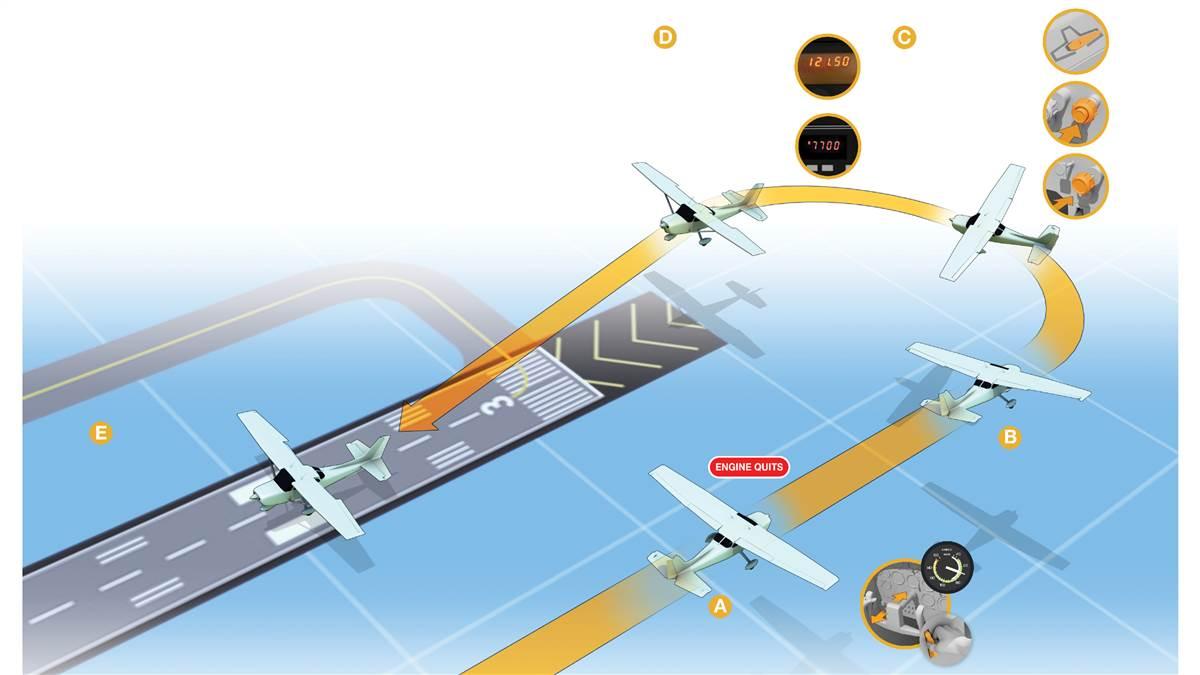
It’s going to happen to you one of these days: You’ll be in the pattern, thinking you’ve got everything going for you—airspeed, position, sight picture—and your flight instructor is going to nonchalantly reach over, pull out the throttle, and announce, “You’ve lost your engine.” It’s now on you to get the airplane on the ground with just the energy and altitude the airplane has at this moment.
Your instructor waited until you were abeam the numbers at pattern altitude—1,000 feet above ground—but you had not lowered flaps or trimmed for a specific speed when the simulated emergency occurs. The mnemonic A-B-C-D-E—Airspeed, Best landing site, Checklist, Declare, Execute—works here, as it would in an actual emergency landing situation.
When the real thing happens
As much as your flight instructor will try to prepare you for an engine failure, nothing’s quite like an actual engine failure. And 99 percent of the time you won’t be conveniently at pattern altitude at an airport. So pick your landing spot with care.
Field. The best of all worlds, unless you happen to be overflying an airport. Look for one aligned with the prevailing winds, and watch for wires and trees. A freshly tilled field may increase the risk that the airplane noses over.
Road. This sounds deceptively easy, but in an urban or suburban area you’ll have to set your airplane down amidst moving traffic, dodging wires and overhanging signs. Still, better than nothing.
Shoreline. In most instances, a good choice—except if it’s a summer holiday. Then you’ve got to avoid vacationers.
Water. Did you bring life jackets? Hope they’re already on. Land into the wind and parallel to any swells; open doors and wedge them open using whatever is at hand. —JWT



